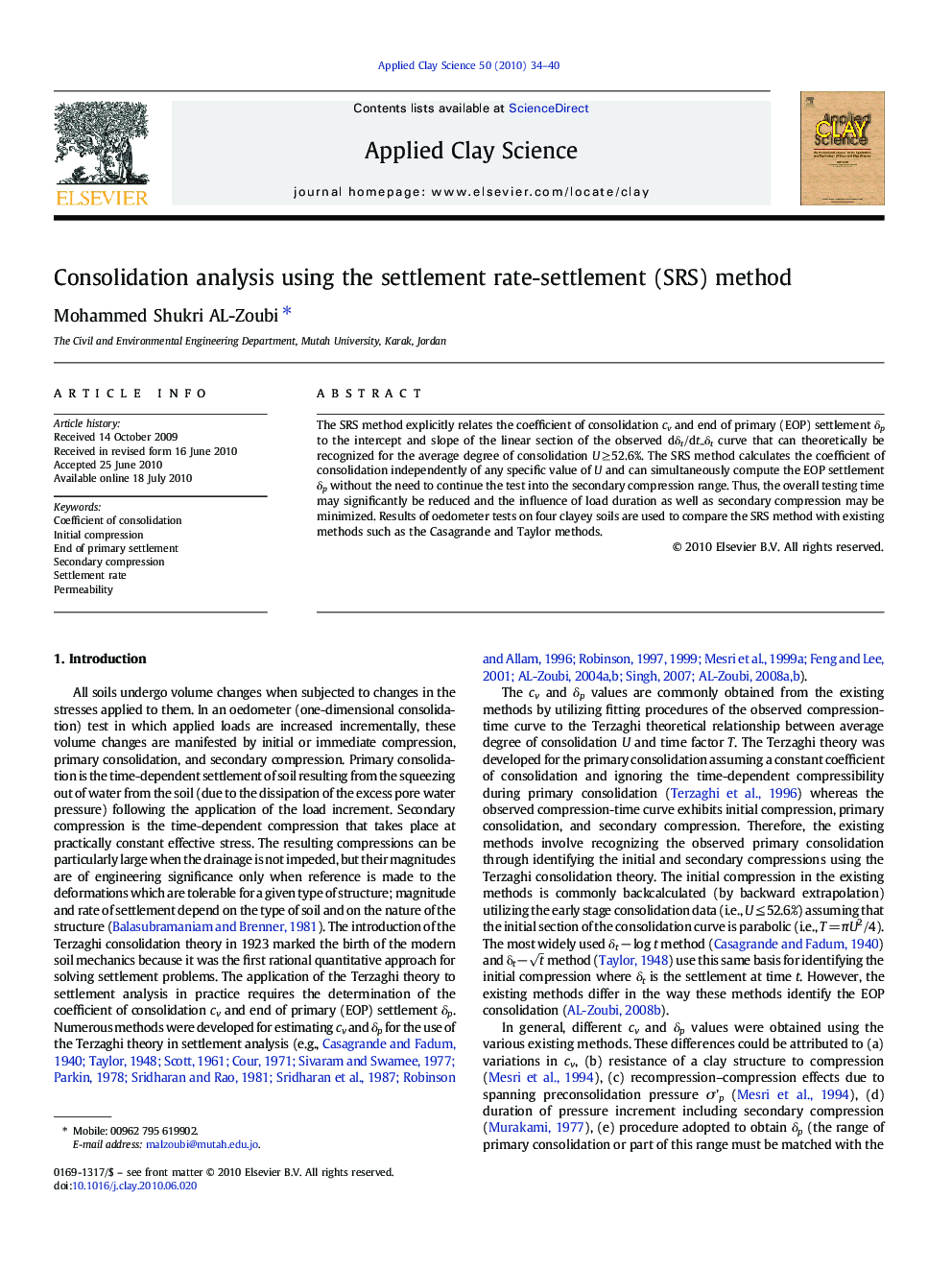| Article ID | Journal | Published Year | Pages | File Type |
|---|---|---|---|---|
| 1695701 | Applied Clay Science | 2010 | 7 Pages |
The SRS method explicitly relates the coefficient of consolidation cv and end of primary (EOP) settlement δp to the intercept and slope of the linear section of the observed dδt /dt–δt curve that can theoretically be recognized for the average degree of consolidation U ≥ 52.6%. The SRS method calculates the coefficient of consolidation independently of any specific value of U and can simultaneously compute the EOP settlement δp without the need to continue the test into the secondary compression range. Thus, the overall testing time may significantly be reduced and the influence of load duration as well as secondary compression may be minimized. Results of oedometer tests on four clayey soils are used to compare the SRS method with existing methods such as the Casagrande and Taylor methods.
Research Highlights►In the SRS Method, cv was explicitly expressed in terms of EOP settlement dp. ►dp was computed without secondary compression stage required by Casagrande’s method. ►The SRS method cv and dp values were quite similar to those of Casagrande’s method. ►The overall testing time and the influence of load duration might be reduced.
